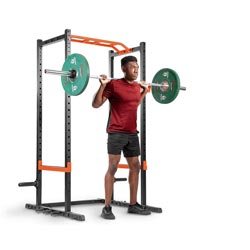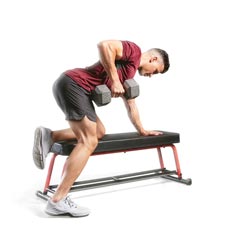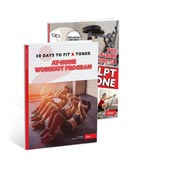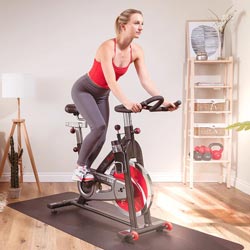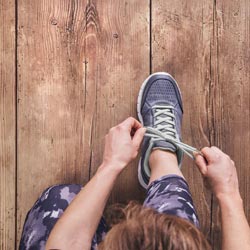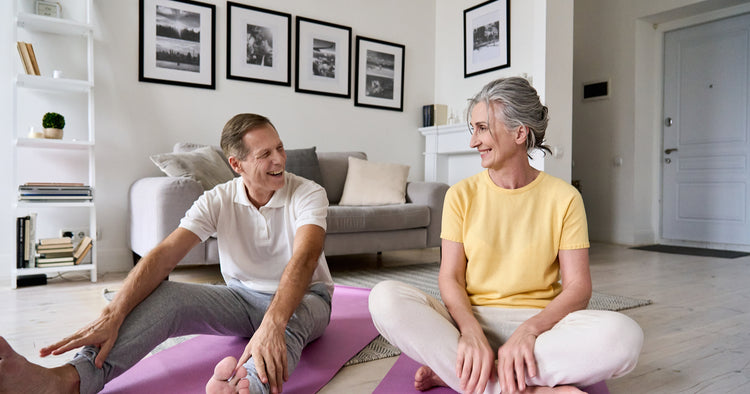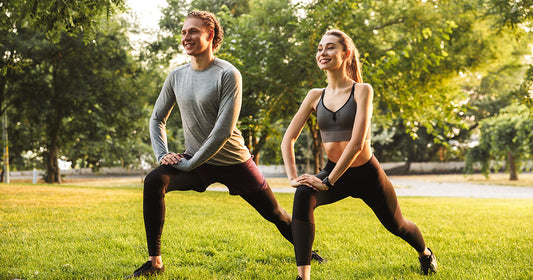As you get older, it is increasingly important to remain active to stay healthy. Regular exercise can help reduce the development of chronic illness in your later years, like heart disease, diabetes, and even dementia, and is associated with a longer lifespan.(1)
According to the CDC, it’s recommended that seniors do at least two and a half hours of aerobic activity per week (2). However, it is quite common for seniors to make mistakes which cause more harm than good when exercising.
Here are the 7 most common mistakes seniors make in their fitness routine.
1. Your Intensity is Wrong
While studies have shown that high intensity workouts can burn more fat in less time and can even be beneficial for seniors - seniors should be aware that modifications should be made when necessary to high intensity programs.(3)
Most people slow down with age and don’t have the ability to work out the same way as they did when they were younger. In that case, talk to your doctor about which workouts are right for you. While exercise is important, so is your health and wellbeing. Your safety should always come first; therefore, modifications should be made with interval training if needed.
This type of training is often conducted and monitored by a doctor, a fitness expert, and or another medical specialist. With supervision and sufficient advice, your intensity will be just right when partaking in an exercise.
2. Your Form is Incorrect
Good workout form applies not just to seniors but to anyone who works out. Improper form can reinforce bad movement patterns, which can overtime lead to compensations and injury.
Bad form also makes your workouts less effective, meaning you may not be targeting the very muscles you’re aiming to engage during your workout.
To improve your form, it’s best to train with a friend or in front of a mirror, so you can check and make sure you are maintaining proper form and engaging the right muscles throughout each move.
3. You Skip Your Warm-up
Skipping a warm-up is never a good idea. A warm-up increases your body temperature and gets your blood circulating, preparing your body for your upcoming workout.
Warming up becomes even more important as you age since it takes longer to recover from injuries. So, make sure to prepare your body by warming-up for at least 5-10 minutes before you work out.
A great way to warm-up is doing your planned exercise at a much slower pace so if you are going to go for a 5-mile run, starting with a 10-minute walk would be a great choice.
4. You Skip Your Cooldown as Well
Your cooldown is arguably just as important as your warmup. After your workout, your body temperature is higher, your heart rate is elevated, and your blood vessels are dilated.
However, if you stop abruptly then and there, you may experience bad blood pooling. Blood pooling is when the blood counteracts the forces of gravity to return to the heart to give the body more oxygen and circulation. Bad blood pooling, on the other hand, causes you to feel faint, dizzy, or even make you lose consciousness.(4)
That’s where a cool-down comes in. The goal of a cooldown is to gradually slow your breathing and heart rate. It’s also the best time in your workout routine to stretch and take time to reflect on your workout.(5)
Dedicate at least 5-10 minutes of your workout time to a cooldown. Aim for something light, as you slowly ease off the gas. For example, if you went for a jog, a good cool-down is going for a walk. Another great way to cool-down is doing some stretching or some yoga poses to help calm and center yourself.
5. You Choose the Wrong Time to Stretch
Most people, including active seniors, make the mistake of static stretching before their workout. If you plan to complete static stretches, (or stretching where you’re holding one position) it’s better to complete them after your workout when your joints and muscles are warm and therefore more pliable.
If you do plan to stretch before your workouts, try dynamic stretching. Dynamic stretching involves moving through a range of motion – like walking lunges or alternating overhead reaches. Using dynamic stretching in your warmup is a great way to gain mobility while also waking up your muscles prior to exercise.
When stretching (either static or dynamic), you want to begin with your major muscles, focusing on those that you just used or plan to use during your workout. Select a small handful of high-quality stretches and set your timer for 10-30 seconds each, or give this senior stretch routine a try!
6. You Ignore Muscle Imbalances & Nagging Injuries
We find that with age, the body takes the path of least resistance unless we move with intention. A muscle imbalance can cause you to depend on one side of your body or depend on muscles that are more mobile rather than the muscles that should be used for a movement simply due to a lack of mobility or strength.
Muscle imbalances are frequent in seniors and often due to years of poor posture and nagging injuries. Correcting muscle imbalances is just as important as maintaining proper form while exercising. Make sure to address any muscle imbalances before beginning a workout program.
You can address muscle imbalances by strengthening weak muscles and stretching tight muscles. If you’re unsure where to start, consider physical therapy or working with a personal trainer.
7. You Focus Only on Cardio
Cardio is great for your heart health, amongst a host of other benefits. There’s no denying that you should incorporate it into your fitness regime. However, cardio is not the only thing you should focus on, especially as a senior.
Strength and resistance training can help improve your bone density, preventing Osteoporosis while improving your overall mobility.(6)Be sure to start light and build up your strength overtime.
Wrapping Up
These are the 7 most common mistakes seniors make while working out. Avoiding these mistakes will help keep you safe and consistent.
(1) Ruegsegger, Gregory. “Health Benefits of Exercise” Cold Spring Harbor Perspectives on Medicine, 2 Jul. 2018, https://pubmed.ncbi.nlm.nih.gov/28507196/. Accessed 31 March 2022.
(2) “How Much Physical Activity Do Older Adults Need?” Centers for Disease Control and Prevention, 11 Feb. 2021, https://www.cdc.gov/physicalactivity/basics/older_adults/index.htm. Accessed 31 March 2022.
(3) Harrison, Jeffrey S. BS, CSCS, NSCA-CPT. “Interval Training for the Senior Population.” Strength and Conditioning Journal, Feb. 2017, https://journals.lww.com/nsca-scj/fulltext/2017/02000/Interval_Training_for_the_Senior_Population.9.aspx Accessed 1 April 2022.
(4) Richey, Kate. “Does Abruptly Stopping Intense Exercise Cause Blood to Pool in the Lower Extremities?” SportsRec, 11 Oct. 2011, https://www.sportsrec.com/8308406/does-abruptly-stopping-intense-exercise-cause-blood-to-pool-in-the-lower-extremities Accessed 1 April 2022.
(5) Van Hooren, Bas and Jonathan M. Peake. “Do We Need a Cool-Down After Exercise? A Narrative Review of the Psychophysiological Effects and the Effects on Performance, Injuries and the Long-Term Adaptive Response.” National Library of Medicine/National Center for Biotechnology Information, 16 Apr. 2018, https://www.ncbi.nlm.nih.gov/pmc/articles/PMC5999142/ Accessed 1 April 2022.
(6) Hong, A Ram, and Sang Wan Kim. “Effects of Resistance Exercise on Bone Health.” National Library of Medicine/National Center for Biotechnology Information, 30 Nov. 2018, https://www.ncbi.nlm.nih.gov/pmc/articles/PMC6279907/ Accessed 1 April 2022.


